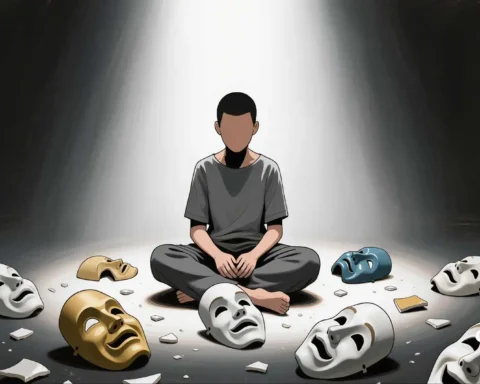Indian cinema and caste are experiencing a significant change. Modern filmmakers are shifting from ignoring caste to confronting it directly on screen. For the global Indian and Brown community, this changing relationship between Indian cinema and caste goes beyond films. It also relates to how identity, privilege, and discrimination cross borders.
Table of Contents
From Silence to Spotlight
For decades, Indian cinema and caste rarely intersected directly. Mainstream Hindi films focused on upper-caste families and treated caste as either a rural issue or a relic of the past. Classic Bollywood stories often normalized upper-caste privilege while sidelining Dalit and Bahujan characters or presenting them as subjects of reform.
Regional cinemas, particularly in Marathi and Tamil, started breaking this pattern earlier by placing caste conflict, humiliation, and resistance at the center of their stories. Directors from these industries led the way for later mainstream projects to engage more honestly with Indian cinema and caste, setting the stage for today’s “anti-caste cinema.”
New Wave Of Anti‑Caste Storytelling
Indian cinema and caste have clashed more heavily in the past 10 years, with the films anticipating Dalit and oppressed-caste heroes. The cruel daily realities of caste have been brought out of the closet in Marathi movies such as “Fandry” and “Sairat,” in Tamil movies such as “Pariyerum Perumal,” “Kaala”, and “Asuran,” yet with characters being free to want, laugh, and act.
The movies are a response to the upper-caste saviour paradigm by focusing on the eyes of the discriminated against instead of those who heroically help people of colour. This is a vital development in Indian cinema and caste where the anti-caste politics are interwoven in the storyline, music, and visual aesthetics rather than being inserted as symbolic social issues.

Mainstream Bollywood’s Slow Turn
Bollywood has a history of being caste blind, particularly in NRI and diaspora centered blockbusters, where wealthy families are displayed without any visible caste indications. Even when movies such as “Lagaan” or “Swades” mentioned caste, they frequently solved the conflict by using enlightened upper-class or NRI characters, and maintained structural criticism at a distance.
Recent movies like Article 15, Kathal, and Jai Bhim (in the pan-Indian conversation) are an indication that Indian Cinema and Caste are at the center of thrillers, courtroom movies, and streaming services. Nevertheless, researchers continue to observe that numerous of these narratives make use of upper-caste detectives, attorneys, or law enforcement as the ethically sound centre, and the call to completely mainstream a Dalit hero is fulfilled partly.
Filmmakers Rewriting The Lens
Dalit and Bahujan filmmakers like Nagraj Manjule and Pa. Ranjith have become key figures in reimagining Indian Cinema and Caste from the ground up. Their films build entire worlds around caste hierarchies, from village wells and school classrooms to urban slums and globalised cityscapes, exposing how discrimination operates in both everyday rituals and spectacular violence.
These directors also reclaim music, language, and iconography, turning Ambedkarite, anti-caste, and labour symbols into stylish cinematic motifs rather than just background props. For the global Indian community, watching their work on festival circuits and streaming platforms creates an important counter-narrative to the glossy, caste-erased NRI films that have long dominated perceptions of “Indian culture.”
Diaspora, Streaming and Caste Conversations
The digital platforms have transformed the distribution of Indian cinema and caste in the world, where politically acute local films are readily available in London, Toronto, Dubai, or New Jersey. Being released second generation and in festivals implies that now second-generation diasporic Indians are exposed to caste not only through the history of their families, but also through the films of inter-caste love and honour killing, and humiliation.
Meanwhile, the scholarly literature on the caste blindness of the NRI films of Bollywood has driven young diasporic audiences to question themselves as to why their favourite diaspora romances seldom show any mention of caste, even though they are obsessed with the idea of tradition and values. Therefore, Indian cinema and caste are becoming more of a topic of conversation within campus groups, local forums, and online platforms where world Indians are now reconsidering their own places in the caste systems.
Why It Matters To Global Indians
To global Indians, Indian cinema and caste influence the way that the relatives, colleagues, and neighbours in the far-off countries perceive the South Asian identity, particularly when caste is being misunderstood as exclusively being back home. Erase-the-caste films can support a comfortable narrative of brown mobility upwards, whereas the anti-caste films make us confront the reality of the transmission of privilege on passports, surnames, and social networks.
It is also the change that provides a means of solidarity: Dalit and other oppressed-caste producers are utilizing Indian cinema and caste as a structure linking their struggles to that of Black, Indigenous, and migrant justice movements in the Global North. To normal brown audiences who wish to be actually anti-racist, watching these movies becomes one means of addressing casteism in the community and not sending a watered-down version of themselves abroad.
Rethinking Representation And Responsibility
The topic of the changing relationship between the Indian Cinema and the Caste also poses significant questions to the producers, actors, and writers in any industry. Who commercially tells anti-caste stories, and who are the benefactors of anti-caste stories? Are Dalit technicians, writers, and performers being employed, given credit, and paid well, or are their lives being exploited as power remains in the hands of the upper castes?
To Indian creators in the global film and OTT industries, criticism or academia, these discussions make it clear that they must form ethical partnerships with anti-caste intellectuals and organisations. By so doing, it will make sure that when the subject of Indian cinema and caste is brought up in international forums, the voices of the Dalit and Bahujans are no longer mere topics in the discussion, but key contributors to the discourse.
Indian Cinema and Caste: The Road Ahead
In the future, cross-regional, multi-lingual work which sees caste not as a villain, but as a dynamic entity, will probably provide the most stimulating work in Indian cinema and caste. The international reach of streaming provides a possibility to normalise the narratives in which Dalit characters not only experience suffering bodies but also tech workers, migrant workers, artists, and leaders as they continue to make decisions based on their caste location.
To the world Indian and Brown community, the Indian cinema and caste development will shape the future generations, discussing identity, justice, and belonging. By making anti-caste movies, anti-caste films, and amplifying their distribution in festivals, in classrooms, through newsletters, and community watch-parties, it is possible to make sure that the movie screen is a more accurate and tolerant representation of the lives of South Asians.
A New Narrative For A Global Community
The modern filmmakers are shaping the Indian cinema and caste into a denial-confrontation zone, to a reflection and imagination zone. The change is significant to the global Indians, as it disrupts the reassuring myths of a caste-free, diasporic community and asks the community to explore its own veiled privileges and exclusions.
With an increasing number of Dalit and Bahujan artists taking up space on screen and even behind the camera, Indian cinema and caste will keep trying to redefine the notion of brown in a world that is already filled with old hierarchies and new solidarities. To viewers on the other side of the world, interested in the question of how to react to this moment, curiosity, humility, and support will make cinema a conduit between lived Indian lives and the emerging sense of who an Indian can be in a globalized world.

FAQs
How have portrayals of Dalit and Bahujan communities in films changed over the last two decades?
Earlier, these communities were often portrayed as victims, background characters, or stereotypes without much depth or control. Recent films show them with complex inner lives, political awareness, and leadership roles. This reflects a broader anti-caste discussion in society.
Why do so many mainstream movies still appear “caste-blind”?
Commercial industries often focus on aspirational, urban, upper-class stories that seem “universal” but are really based in privileged social positions. This leads to a superficial neutrality where caste is seldom acknowledged, even though it quietly influences language, surnames, jobs, and environments.
What role do Dalit filmmakers and writers play in transforming film culture?
When people from marginalized communities write and direct, they change the focus from pity to dignity, love, humor, and political assertion. They also affect casting, dialogue, and music choices. This ensures that anti-caste politics is part of the whole production process, not just the plot.









